
Bob King looks at this record and the man who achieved it – Alan Bruce.
To this motor racing historian, motorcycle records were a peripheral issue, at least until I heard Alan Bruce’s story.
Let us start at the finish with an excerpt from the London Daily Mail May 4, 1932:
RECORD BREAKING IN HUNGARY, Alan Bruce, riding the J.A.P. 1000 c.c. machine on which he attained a speed of 200kmh on the Tat road near Budapest, April 30, 1932.
Alan Bruce is the first Australian to hold an officially recognized, WORLD LAND SPEED RECORD, the streamlining is noteworthy. This reads as a photo caption.
Another report, this time possibly from an Australian source, is headed:
AUSTRALIA “Knocks it for Six”, Alan Bruce on his now famous “Leaping Lena”, Sidecar outfit at Tat near Budapest, successfully attacked the Worlds (sic) Record for the two-way flying kilometre. His time, 17.88sec, is an average speed of 200.220 kmh, equal to 124.41 mph.
“The Motorcycle”, in another report noted that it improved on the “German figure by 6 mph”. The mention of ‘German Records’ hints at mounting tensions in Europe, which, to a certain extent, would be played out on race tracks and through record breaking.
Records like this do not happen by chance, but are usually preceded by months and possibly years of planning with the expectation that there will be set-backs. The unusual venue indicates the seriousness of this attempt. At that time the Tát road was thought to be the only suitable stretch of road for record breaking in the whole of Europe. Google maps suggests that the likely venue is a straight stretch of road that runs with no crossroads for approximately 8 kms north-east from Tat to Nyergesüjfal; it borders wide stretches of the Danube and is now known as Route 10, or locally as Kossuth Lajos U.


Most of my information on ‘Leaping Lena’ comes from Phil Irving’s Autobiography, 1992 (Turton and Armstrong). Phil Irving and Alan Bruce, who were of a similar age, had met at Stillwell and Parry’s in Elizabeth St. Melbourne, where Alan had been tuning racing machines. They shared a passion for motorcycles, particularly AJS, and had a continued friendship for the rest of their lives. Between them they cobbled up an overhead camshaft for an AJS, which was not particularly successful.
It is said that Alan got the notion of setting a Land Speed Record when he saw Paul Anderson take local records on Sellicks Beach, South Australia, in 1925. By 1926 Alan had done a lot of record breaking including the sidecar record for 350 c.c. machines on Bakers Beach in Tasmania. He also set the sidecar record from Hobart to Launceston; his speed exceeded the existing solo record.
By 1930 Alan had found success on the English speedways with a Rudge to which he had added his own modifications to the frame and forks. That year Phil arrived in England as Victorian 350c.c. Sidecar Champion. In 1931 they got together and cooked up a plot to break existing solo and sidecar world records – an ambitious plan for a couple of under-funded Australian battlers. They were joined by Arthur Simcock who was able to bring some Shell sponsorship. He was to ride solo, with Alan on the outfit. Although it was not his core skill, Phil was inveigled into designing a streamlined shell for the bike. The design was an attractive and unusual example of form meets function achieved without access to a wind tunnel. The front of the rig was not faired to avoid the adverse effects of crosswinds; the engine and sidecar were enclosed and the tail of the bike was shaped so that the rider’s backside was encased in a bucket seat. Eatons of Euston Road were tasked with beating up the shell; they formed the cowling over Arthur Simcock’s helmet. Phil’s involvement was confined to London; he did not go to Hungary.
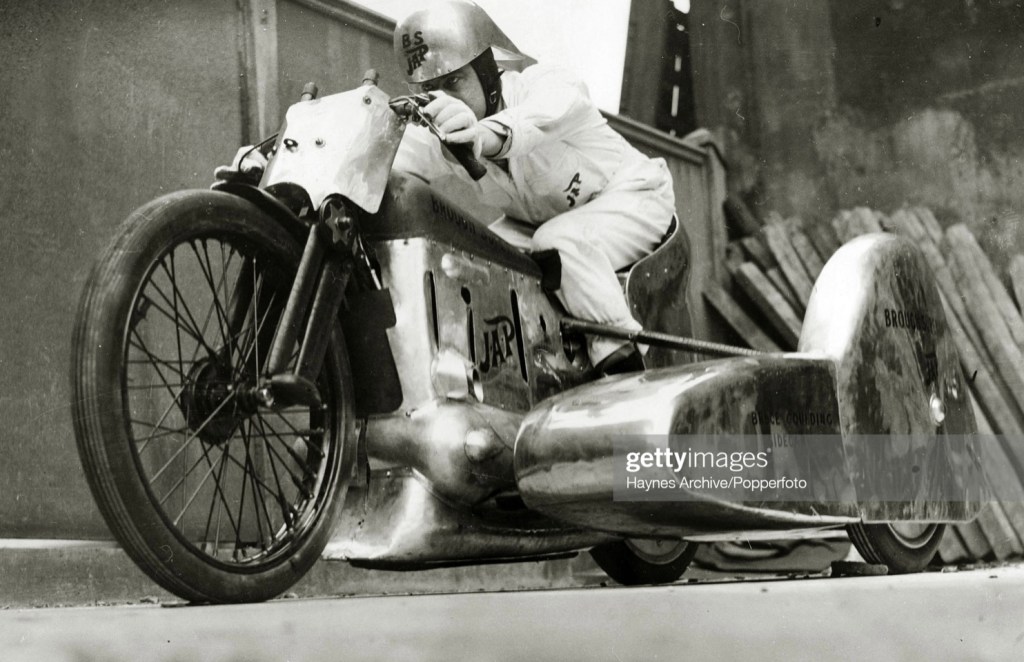
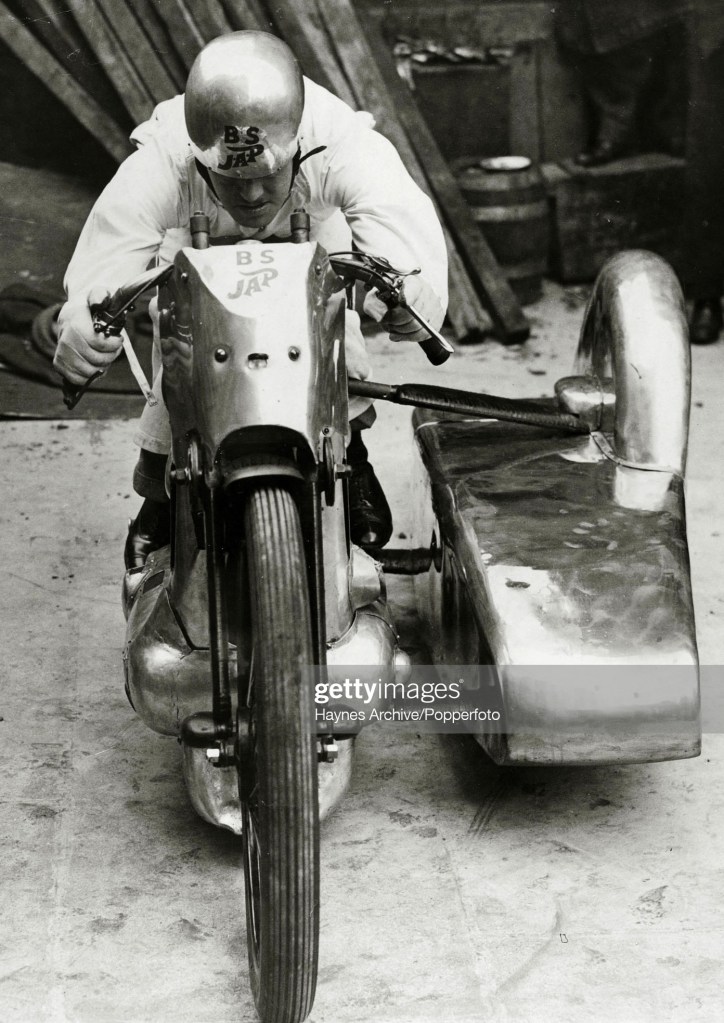
The chosen machine was a Brough Superior SS100 with a J.A.P. V twin of 996 c.c., supercharged with a Powerplus blower. Alan assembled the power plant meticulously, but did not dyno-test it as its expected 100bhp exceeded the capacity of J.A.P.’s dynamometer. Phil already had a grasp of exhaust tuning; opting for short stubs finishing inside the fairing to avoid loss of charge down a long pipe. Theirs was a private venture with some trade support in the shape of parts as well as Shell fuel and lubricants; quite different from the Reichsmarks being spent elsewhere.
Their first visit to Hungary was in April 1931. Records were to be set on the average speed over the measured kilometre in two directions. After Arthur achieved a two-way average of 143 mph (229 kph) his attempt failed when a piston partially seized on a further run and the venture was abandoned until the following year. One can imagine their disappointment after traipsing all the way to Hungary.
Back in the UK, Phil and the team had other things to concern them, as they were also preparing a number of bikes for the forthcoming Isle of Man TT. In 1932 they trundled off to Hungary again with the bike on a truck. This time the record attempt went off without a hitch until Alan aviated the bike at near his maximum of 135 mph causing him to shut off. He then thumped a railway crossing, not realising he had passed the finish timing strip.
Not being across motorcycle records, this bit of Aussie fame had escaped my notice; at least until about 1983 when I had as a patient in my medical practice Alan Bruce’s middle-aged daughter. She told me of her record -breaking father whom she had not seen since before the war. He was shortly to come home for his eightieth birthday and she would like us to meet.
This culminated in a visit from Alan to see my cars and with me attending his birthday party which was also attended by Phil Irving and numerous elderly gentlemen, most of whom had pronounced limps. Alan entertained me with stories of his successful career on European tracks and was justifiably proud of is world land speed record. Seeing my Bugatti, he told me how he had been given a lift from Budapest to Tat for the record attempt with Swiss racing driver Armand Hug in his supercharged eight-cylinder Bugatti; Hug was also after some records. The whole journey was taken flat-out, including through villages, scattering chickens etc. in their wake. Among other achievements, Alan had designed a banking side-car for racing outfits on cinders which was a considerable improvement over Freddie Dixon’s pioneering eight-year-old design. The reason he had stayed overseas after the war was that he had joined the occupation forces in Germany, remaining there after marrying a German fräulein.
Alan’s final word on his record attempt: “Yes, it felt fast alright”.

Postscript…
The mention of Ernst Henne in regard to land speed records brought to mind an interesting anecdote told to me by my late, lamented friend Lucien Chabaud.
Lucien had spent his teen years in the Vaucluse, Provence. During the war he and his mates shared a racing Terrot motorcycle that they would start up from time to time, according to the availability of dope with which to fuel it.
One day they were playing with the Terrot in the main street of Orange; Avenue de l’Arc de Triomphr on Route National Sept. Their play was interrupted by the arrival of an imposing German staff car. A German officer stepped down, studied the bike, and asked if he could try it out. Moments later he was streaking up the highway, rounding the triumphal arch at an impressive speed: shortly after reappearing, still flat-strap.
Next day a German army truck arrived and a 200-litre drum of aviation fuel was unloaded, to which was attached a note reading: “Merci, Henne”. At that time Henne was the holder of the World Land Speed Record for a motorcycles at 279.5kph – set in 1937, the record was not broken for another 14 years.

Etcetera…
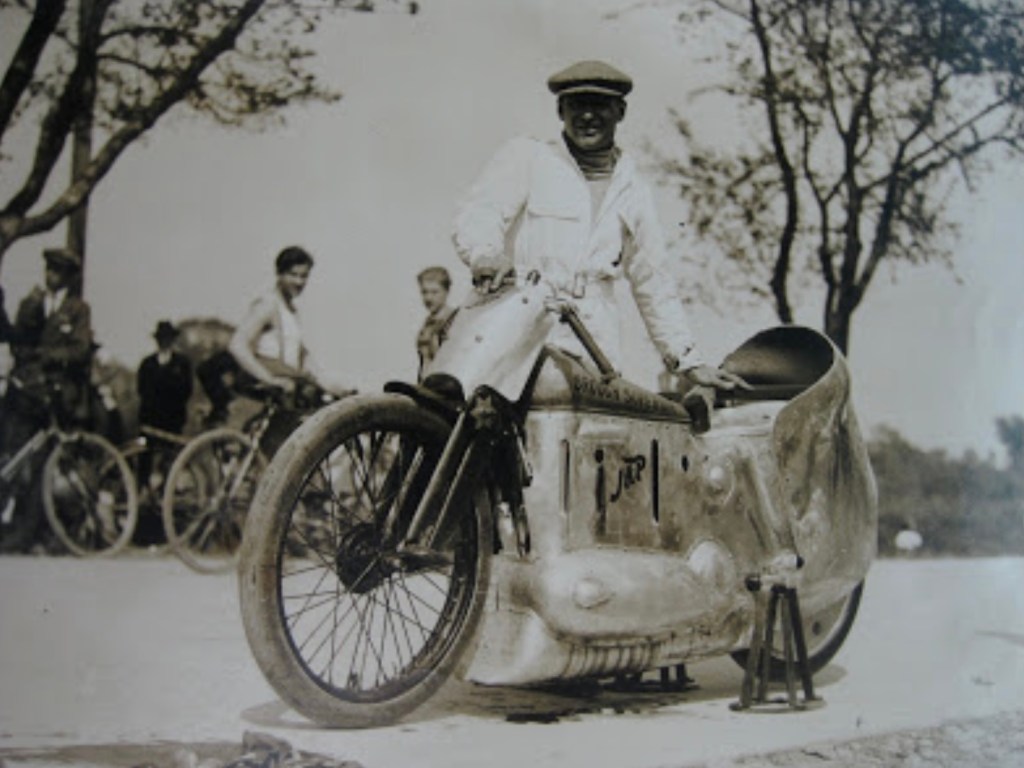
On location in Tat, Hungary, in Solo format, probably Arthur Simcock.
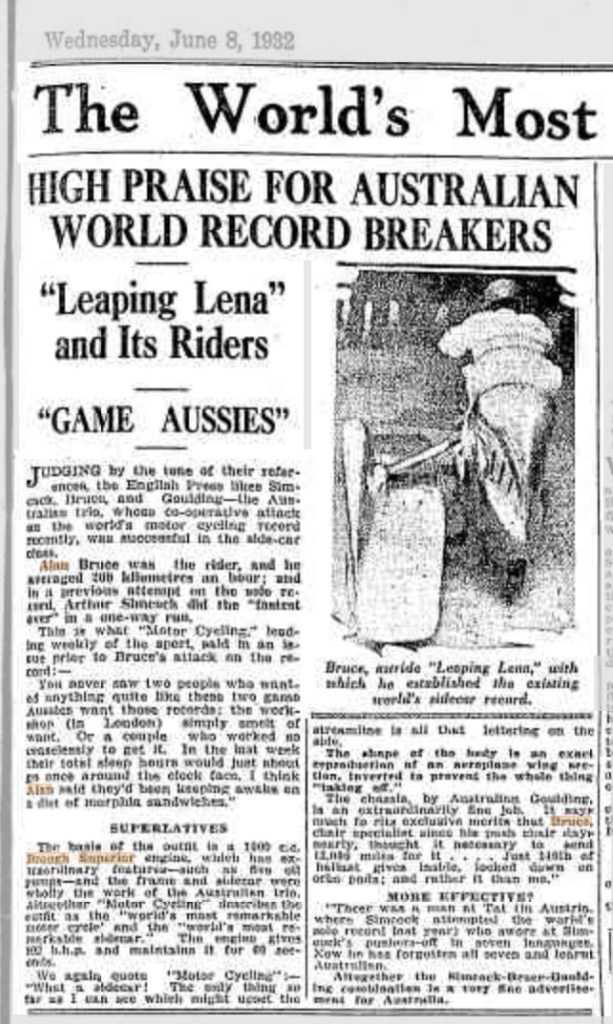
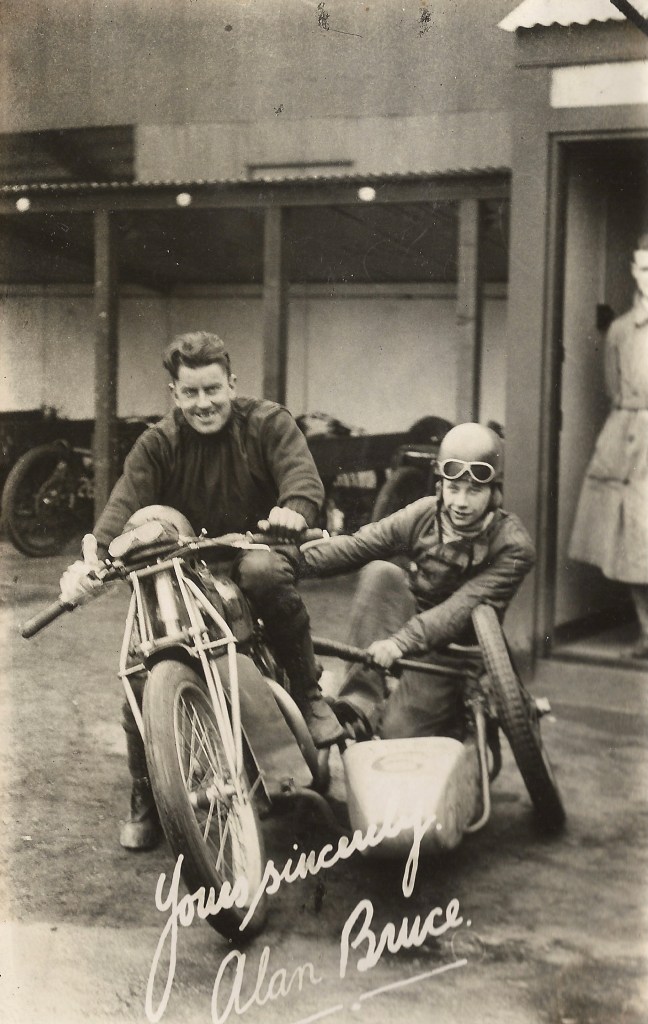
‘Fan-card’ shot shows the canted speedway sidecar.
Credits…
Bob King, The Vintagent, Moto Revue Jan-March 1933
Tailpiece…

Stylised machine is a blend of 1930 OEC-Temple-Jap record breaker and the bodywork of Leaping Lena.
Finito…
Good stuff, Mark. The unidentified men is Erwin Tragatsch, a German Bugatti Authority and a friend of Alan’s.
Tragatsch was also the author of “The Illustrated Encyclopedia of Motorcycles”, as well as producing JAP-engined racing bikes in the immediate post-WW2 period.
Mark, You dropped the O from Orange in the postscript. Looks good.
B